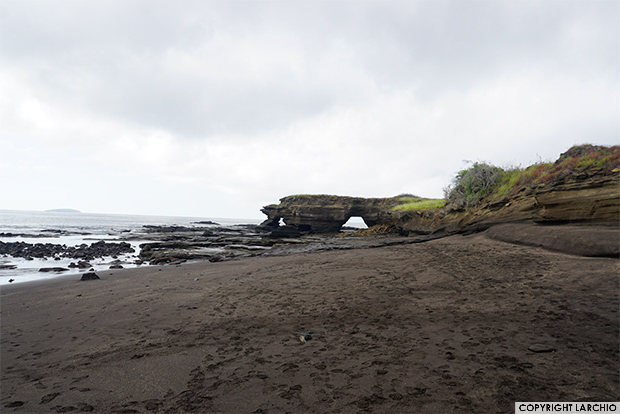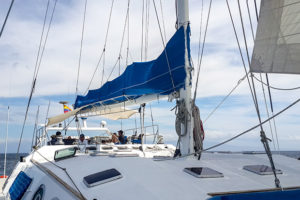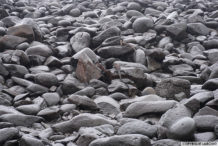Trip to Galapagos Islands
Seeking the best rated Galapagos tour operator? Take a trip with GalapagosInformation.com. Recommended in LonelyPlanet. Enjoy the best traveling experience. The top rated service, many selections, luxury accommodations, properly trained guides. All Inclusive vacations, every week of the year. Book today. Trip to Galapagos Islands.
A vacation to the Galapagos Islands can be the adventure of an individual’s entire life. Found 1,000 km from the Ecuadorian mainland, the archipelago is composed of 13 large islands, five of which are inhabited. Learn more about the widely known Islands by taking a excursion with us!
The Galapagos Islands are blessed with enjoyable climatic conditions all year round, so there is not any “best” period to visit the precious islands. Yet, you might consider elements for instance high season vs. low season along with the weather. Whether the excursion is for you, your team, or your family, find out more about when to check out the Galapagos Islands.
The Galapagos Islands will definitely affect you intensely. Take a trip with our company and have the adventure of your life around fun sea lions, graceful albatrosses, red sally light-foot crabs, and frigate birds. You could make your dream come true and contact us now!
When is a good time to visit the Galapagos?
It’s a frequently asked question: When is a good time to go to Galapagos? You can find many replies, depending on what you need out of your Galapagos trip. If you wish to see the reptiles and mammals the Galapagos Islands are famous for, you might want to consult this calendar to help you plan your journey.
The same as the birds, the mammals and reptiles in Galapagos follow particular cycles of breeding as well as other life functions. These behaviors change during various moments of the year and from island to island. For example, if you want to see the glowing red-and-green “Christmas Iguanas” of Española, you should go in December or January.

Galapagos Islands Cruise Itineraries
Every accredited vessel sailing the Galapagos follows a 15-day route approved and established by Galapagos National Park. During that period of time, a boat may not go to the same site twice, with the exclusion of the Charles Darwin Research Station on Santa Cruz. How lines segment the 15 days may vary, but four-, five- and – eight-day choices are the norm. Passengers can frequently combine these segments into 11-, 12- and 15-day cruises.
All boats basically follow the identical protocol, regardless of itinerary: Island visits and extra-curricular tasks are done throughout the day, and also nearly all navigation is performed immediately.
All cruises start or end at one of two islands having a airport: Baltra, a U.S. military outpost during WWII turned Ecuadorian air base, or San Cristobal, the Galapagos’ second most populated island and home to the capital of the province, Puerto Baquerizo Moreno.
Since the method of cruising continues to be standardized, choosing the right itinerary includes a lot to do with cruisers deciding which visitor websites are in their must-visit lists. Port research — especially photo searching — is essential. Remember that the longer the cruise, the further west the ship will reach. That is not to mention the western islands are better — it’s a matter of personal preference. If you cruise is also an important consideration.
There is one main exception: “Live aboard” boats carrying experienced divers are the only craft to see the northern islands, Darwin and Wolf, prime places for scuba enthusiasts. In Darwin, where there’s not any landing site, schools of hammerheads are known to congregate.
Most passengers will at least spend a day or two exploring Quito or Guayaquil pre or post-cruise. It is basically necessary, given the flight logistics.
Each of the Galapagos’ official guest sites has something unique to offer, but travelers will have the ability to experience the best strikes — sea lions, marine iguanas, lava lizards, endemic birds — about the vast majority of islands. Here are a couple of the most well-known spots.
Santa Cruz includes the Galapagos’ most populous “city,” Puerto Ayora, and will be the island chain’s most important tourism hub. The island offers people the only chance to experience the Galapagos’ interior high-lands, among a couple areas to see giant tortoises in their natural habitat. The Charles Darwin research center, a visit to which will be contained on every cruise, is also situated here.
South Plaza encompasses less than one-tenth of a mile in place and is one of the Galapagos’ smallest visitor websites. Nevertheless, the tiny island, that was shaped by volcanic uplift, makes a powerful impression with its color-changing ground vegetation, sea birds and colony of Galapagos land iguanas. The effective male iguanas can be seen standing guard in front of a cactus tree, waiting patiently to provide a hungry female using a part of prickly fruit.
Rabida: creates a bold statement when you arrive during its iron-rich red shore. Just inland is a brackish lagoon where visitors frequently visit flamingos, heads plunged underwater to scoop up crustaceans and algae with their bowl-like beaks.
Fernandina, the Galapagos’ youngest and westernmost island is best known for its not-infrequent volcanic eruptions, the most recent of which was in 2009. It is situated at the locus of this “hot spot” that created, and is still forming and creating, the Galapagos. As visitors step across lava flows and about the huge population of land iguanas, they develop a firsthand understanding of the ancestral roots of the islands.
Floreana is the place you can find the Galapagos’ very famous barrel-mailbox at Post Office Bay. For centuries, those seeing the famous Ecuadorian isles relied on the unspoken responsibility of pirates and whalers to acquire letters to a planned destination. A mariner would render a dispatch, then pick through the stack for missives he can send (travel program allowing). The tradition continues today; cruise passengers visiting the website may leave and take postcards from a (modern) barrel. Floreana is home to the Galapagos’ famous barrel-mailbox at Post Office Bay. For centuries, those visiting the famous Ecuadorian isles relied upon the unspoken duty of pirates and whalers to Puerto Villamil and Nearby Areas – Isabela Island Cruises take in an assortment of intriguing things around the massive island. Puerto Villamil is a small vent in the south east of this island, and it’s home to the majority of the island’s population. It’s possible to enjoy the fishing-community vibe, sample yummy freshly caught seafood, engage with all the merry children, shop for souvenirs from the colorful stores, and respect the islets that dot the coast. Stroll along the boardwalk, leading through mangroves, and see flamingos, gallinules, whimbrels, and much more. The Tortoise Breeding Center sits at the end of the boardwalk, helping to conserve ocean tortoises. The harbor is often filled with small luxury yachts and other sailing vessels, many of which carry passengers on exciting Galapagos cruises.
Isabela Island Cruises enable guests to discover the natural beauty of the largest island of the Galapagos. Straddling the Equator, Isabela Island is located in the western portion of the Galapagos archipelago, near the volcanic Galapagos hotspot that created the island group. A lesser-visited region, it is also one of the most diverse, and it’s no mean feat in an area that’s already famous for being among the most diverse places on the planet.
Galapagos Animals
The Galapagos penguin is the sole available in the northern hemisphere and to breed in the tropics.
A Galapagos tortoise can weigh around 595lb (270kg) using a carapace of 4ft (1.2m) and outlive most people.
The endemic Galapagos fur sea lions would be the smallest one of the world’s seven species of such animals
The Galapagos Islands are home to the world’s largest cormorant and also the only one struggling to fly.
Galapagos has among the planet’s rarest ecosystems in which the herbivores at the peak of the food chain are reptiles.
Galapagos Swallow-tailed gulls are the only gulls in the world to feed at night .
The Galapagos boasts the world’s largest and just red-footed booby colony.
There are 23 species of reptile in the Galapagos and all but two of those are endemic to the archipelago.
The Galapagos is one of the few regions of the world where turtles continue to be a common sight.
In 30cm in length and with a large set of jaws that are venomous, the endemic centipede (Scolopendra galapagoensis) is among the Islands’ most feared creatures.
A lichen poll in June 2010 by the Charles Darwin Foundation discovered more than 60 brand new species from the Galapagos with an estimated ten species new to science.
GALAPAGOS CRUISES 2024
NEMO 2
| DEPARTURES | ITINERARY | AVAILABLE CABINS | SPACES | |
|---|---|---|---|---|
| There aren't available dates for the selected dates |
















